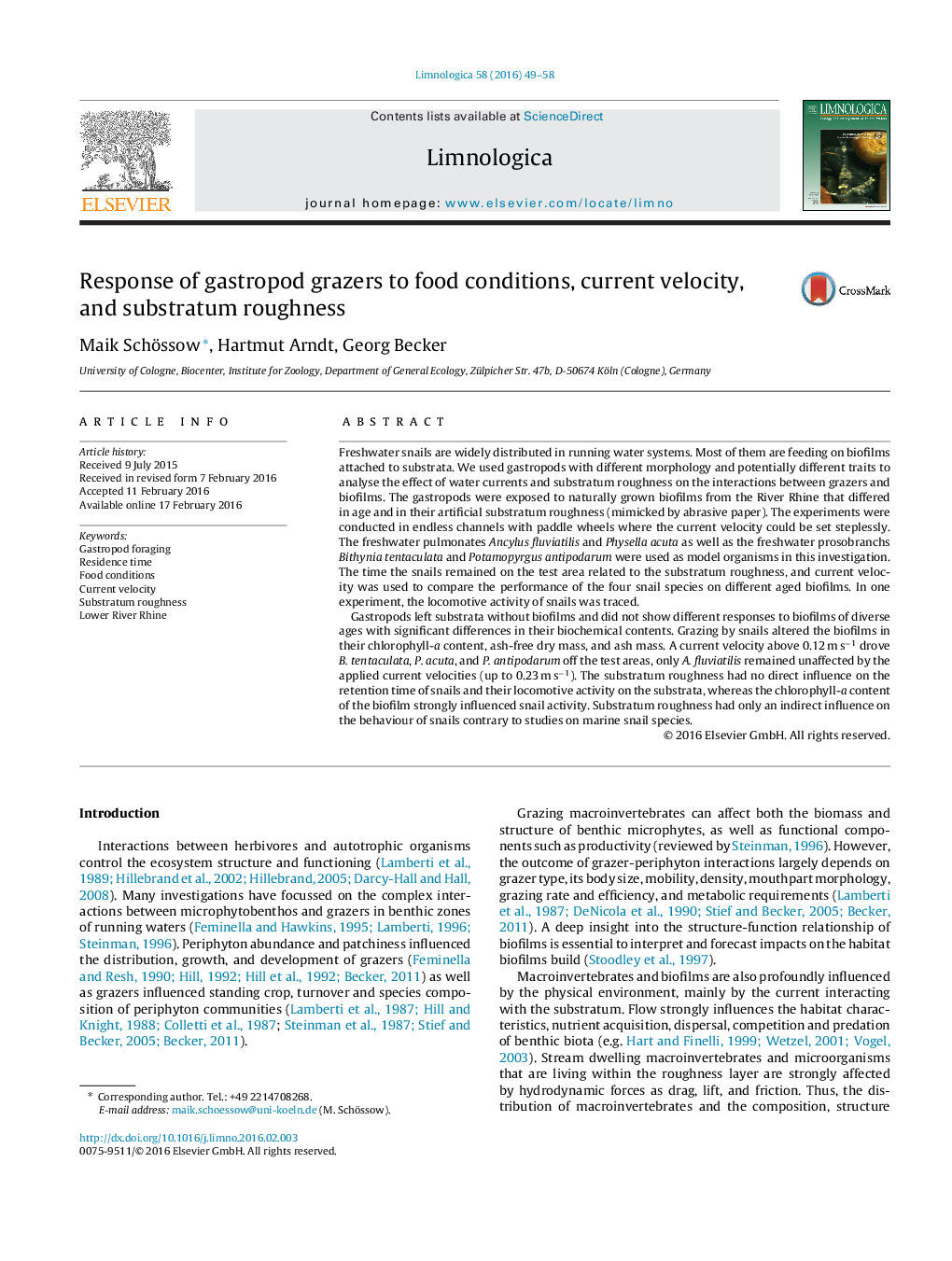| کد مقاله | کد نشریه | سال انتشار | مقاله انگلیسی | نسخه تمام متن |
|---|---|---|---|---|
| 4400338 | 1618564 | 2016 | 10 صفحه PDF | دانلود رایگان |
Freshwater snails are widely distributed in running water systems. Most of them are feeding on biofilms attached to substrata. We used gastropods with different morphology and potentially different traits to analyse the effect of water currents and substratum roughness on the interactions between grazers and biofilms. The gastropods were exposed to naturally grown biofilms from the River Rhine that differed in age and in their artificial substratum roughness (mimicked by abrasive paper). The experiments were conducted in endless channels with paddle wheels where the current velocity could be set steplessly. The freshwater pulmonates Ancylus fluviatilis and Physella acuta as well as the freshwater prosobranchs Bithynia tentaculata and Potamopyrgus antipodarum were used as model organisms in this investigation. The time the snails remained on the test area related to the substratum roughness, and current velocity was used to compare the performance of the four snail species on different aged biofilms. In one experiment, the locomotive activity of snails was traced.Gastropods left substrata without biofilms and did not show different responses to biofilms of diverse ages with significant differences in their biochemical contents. Grazing by snails altered the biofilms in their chlorophyll-a content, ash-free dry mass, and ash mass. A current velocity above 0.12 m s−1 drove B. tentaculata, P. acuta, and P. antipodarum off the test areas, only A. fluviatilis remained unaffected by the applied current velocities (up to 0.23 m s−1). The substratum roughness had no direct influence on the retention time of snails and their locomotive activity on the substrata, whereas the chlorophyll-a content of the biofilm strongly influenced snail activity. Substratum roughness had only an indirect influence on the behaviour of snails contrary to studies on marine snail species.
Journal: Limnologica - Ecology and Management of Inland Waters - Volume 58, May 2016, Pages 49–58
